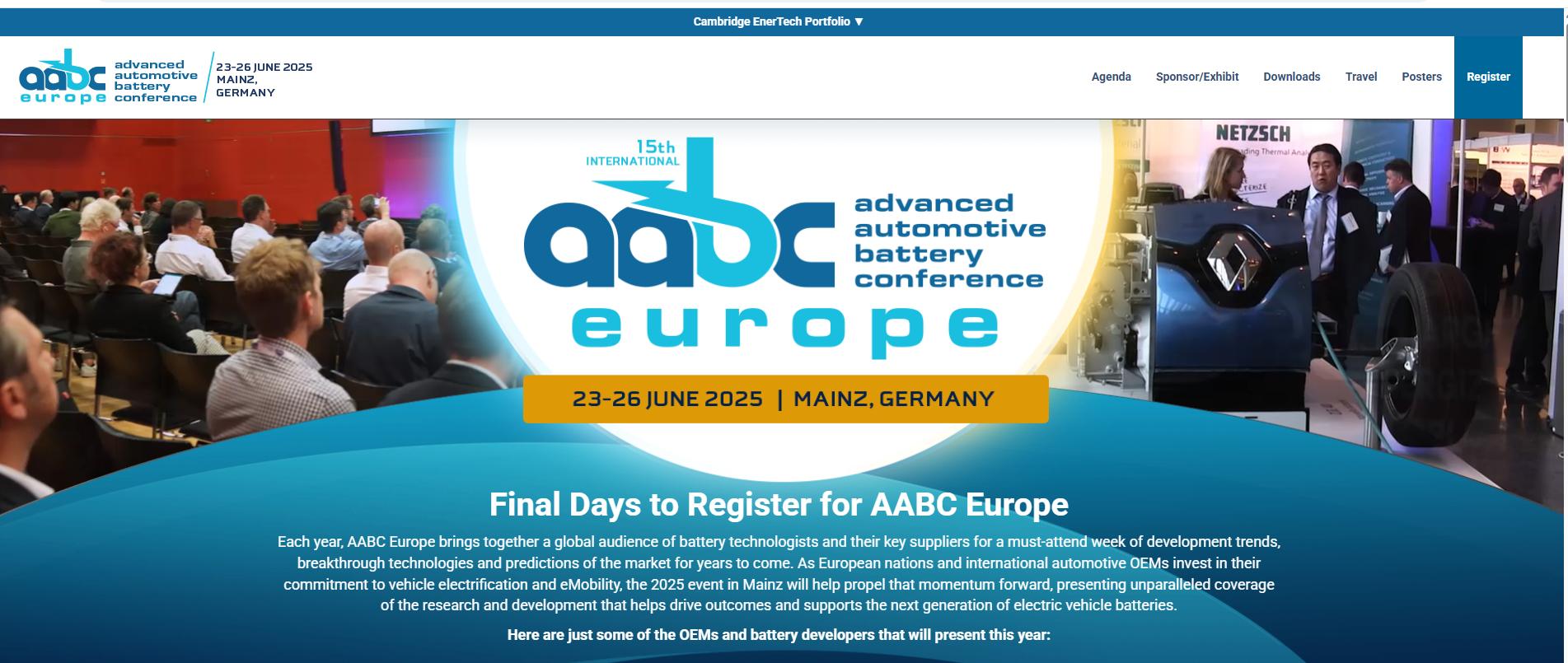Advanced Automotive Battery Conference Europe 2025

Management Summary
This year’s Advanced Automotive Battery Conference Europe #AABC2025, which took place from June 24-26 in Mainz, again focused on trends and innovations for automotive-grade lithium-ion batteries.
The conference is aimed at an international audience of experts, and this year I was able to attend in person and on site for the first time. The wealth of topics and the expertise of the participants was very impressive:
A very broad range of topics was covered in over 210 presentations. The spectrum ranged from academic presentations on solid-state technology to more practice-oriented contributions from well-known vehicle manufacturers who presented their latest battery concepts.
An exhibition complemented the conference, with over 100 companies offering technologies and services relating to the development, testing and production of Li-Io cells. The exhibitors included start-ups, medium-sized companies as well as global players such as Henkel, Honeywell, Saint Gobain, Shell and Total Energies.
- Tutorials on the day before the conference rounded off the conference program. In a total of 12 deep dives, participants were able to deepen their knowledge on various topics such as solid-state cells, sodium-ion batteries, silicon anodes and raw materials.
On the development side, the focus this year was on silicon–enriched anodes and solid-state cells.
Silicon-enriched anodes represent an evolutionary development of the current Li-Io technology. Cells with this technology offer moderately increased energy density and can be produced on existing production lines.
SI-enriched cells are already used in production vehicles, for example in Mercedes-Benz, Porsche and Tesla. As a rule, the proportion of silicon is limited to 10-15%, as the swelling of the cell during the charging process remains manageable at this level. The algorithms for SoH and SoC control must be adapted, as SI-enriched anodes have different characteristics.
Solid-state cells are a revolutionary development of established Li-Io technology; production on existing production lines is not possible. They promise a significantly higher energy density and have been the holy grail of cell research for many years.
The problem is that there is no single solid-state technology. Instead, many technologies are now grouped together under this collective term – sometimes for marketing reasons. So far, only polymer-based cells have been used, but due to the low ion conductivity at room temperature, the cells must be operated at 60-80 degrees.
On the application side, the presentations by vehicle manufacturers were very exciting and well attended, with the lecture halls generally completely filled. General trends among OEMs are:
- The switch from pouch cells to prismatic cells (e.g. GM, Mercedes-Benz, VW) or cylindrical cells (BMW), where the issue of safety is likely to play a major role.
- The adoption of LFP cell chemistry, which is already firmly established in China by CATL and BYD, in Europe (including Stellantis, Mercedes-Benz, VW) and the USA (including GM, Stellantis).
Further highlights of the OEM presentations were:
Mercedes-Benz presented, among other things, its first test vehicle built with solid-state technology. This is a vehicle based on the EQS, in which cells from US technology partner Factorial Energy are installed. These increase the range by up to 25% to 1000 km with the same installation space and weight as the conventional battery.
However, the cells must be operated under increased pressure to ensure contact at the interfaces and prevent lithium plating. In the test vehicle, the pressure is generated pneumatically, but it remains to be seen whether this approach is also suitable for series production.
Volkswagen presented three new cell variants.
- The sodium-based battery is intended for the entry-level market.
- Cells with LNMO chemistry (Lithium Nickel Manganese Oxide) are intended to replace NMC cells with a similar energy density and will be more cost-effective due to the absence of cobalt.
- VW is cooperating with QuantumScape on solid-state cells; the challenges cited include ion conductivity and the producibility of the separator.
Of course, all three new cell variants should be compatible with the “VW unified cell” produced by the VW subsidiary PowerCo.
Conclusion: The AABC really lives up to the claim “Advanced”. Anyone interested in new technologies in the field of lithium-ion batteries cannot avoid this conference.
